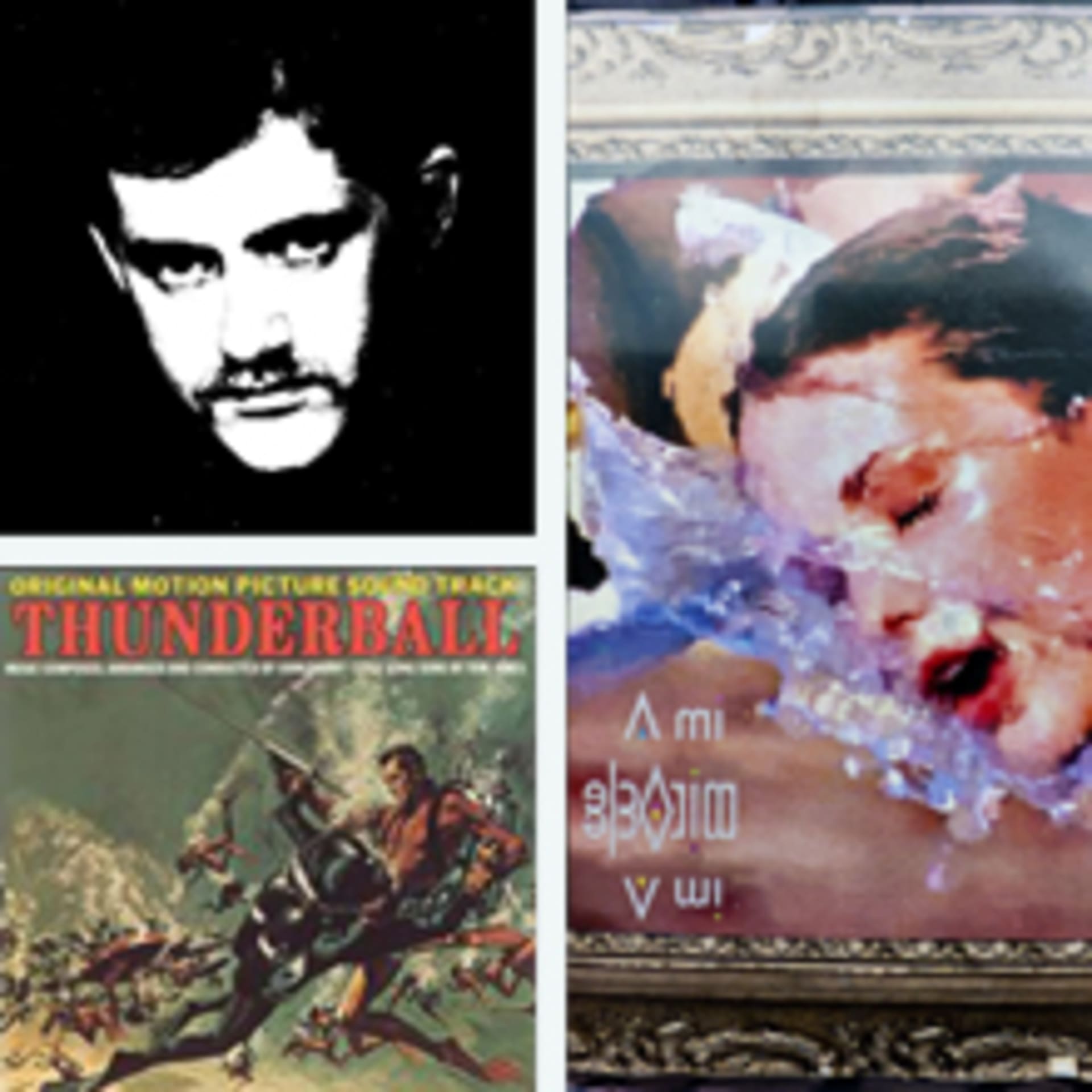
Heatsick’s Tour Diary
Above, clockwise: Patrick Cowley’s School Daze (Dark Entries); Black James’ im A mirAcle (FarFetched); John Barry’s original soundtrack to the 1965 James Bond flick Thunderball.
Heatsick, aka Steven Warwick, is a British musician and visual artist based in Berlin. His work encompasses technology, hybridization, performance, sculpture and film. He is a regular contributor to Electronic Beats. Here he recaps the music he heard on his recent world tour and what it says about the power of music in its relation to location and memory.
I have just returned from a five-month tour around the world. To say I have been feeling displaced is a massive understatement. Being in so many non-places such as airports and without a home, I really started to drift. And I learned to love it. However, the longer I was without a fixed location, the more recordings and books I amassed. Perhaps this is a psychological need to root down to something. Either way, I became fascinated with the power of music in its relation to location and memory. This first happened when I was on a stopgap stay in London over winter at a party of a friend of my partner’s. “Do you like John Barry?” I was asked by another partygoer. “Well, yes, I like his Bond soundtracks, but I’ve never really sat down and listened to them.” Cue a Bond soundtrack! Maybe it was the prosecco and the serendipity of it all, but I was thrown back into watching a forgotten Bond film, with a flashback more intense than any I’ve ever encountered, each note triggering more cinematic details. I felt I realized the power of soundtracks—their subliminal effect on cinematic memory and how deeply embedded in one’s consciousness they can become. I couldn’t recall the soundtrack name, but I distinctly remembered one song, its woozy flutes and eerily hypnotic scale snake charming my mind. I had to hunt it down. After several failed YouTube attempts, I decided to instead watch every Bond film until I found said piece of music. After three movies, I found it on Thunderball, Bond’s fourth. The track in question was “The Bomb”, which played over and over again my mind. After that, I watched as many Bond films as I could before I got bored. I got to Live and Let Die. I was reminded of the sheer ideological overload of cold war paranoia, the transparent sexism and racism on view. I wanted to rewatch with adult eyes, my anchor to childhood in an otherwise strange drift, which was to last for many months of my tour.
After that, I was off to America for a month, basing myself in L.A. but traveling all over for six weeks. A city without a center, L.A. was the perfect environment to reside in. Driving around the city with a friend, we listened to so much music and eventually realized just how much time we spent in a car. Indeed the car for me was a home itself, with its own ecology and lifestyle built around it. I found out that cassettes are still currency in the U.S., and in several cities they were placed in my hand. In St. Louis, I had the fortune to play with Black James, a bizarre all-girl project best described as GRM style tape collage of popular song, with homothug girls voguing and projecting webcams onto multi-video channels in the background. It was one of the most baffling things I saw and I wondered how it would translate onto recordings. Actually, the image proved impossible to shake, as I am stuck with this memory no matter what I hear on their cassette.
In Philadelphia I was given tapes by self-styled American rager M ax Noi Mach, most of which were somewhere between power electronics, ghetto tech and state of the world addresses. In San Francisco I was given several records from the Dark Entries label, including the School Daze soundtrack by Patrick Cowley, San Francisco’s legendary Hi-NRG disco producer, who made classics with Sylvester and a notoriously psychedelic remix of Donna Summer’s “I Feel Love”. The Cowley record was a lo-fi soundtrack made for a gay porn flick, but the music is quite different to the bombastic Hi-NRG productions he’s known for and what I would have expected. These tracks are a lot more experimental and introspective, showcasing another side of Cowley that I greatly endorse. This record also started to soundtrack my own journey around America in the opposite way to the Bond, in that I was listening to the music having not seen the film and trying to imagine how it would work together. I was reminded of the Fred Halsted film LA Plays Itself, which is part porn, part social critique of the changing state of Los Angeles and soundtracked with bizarre tape collage music. Which is to say that it is completely at odds with the desired effect to arouse.
But back to Cowley: A track that I became particularly fond of is “Mocking Bird Dream”, with its dissolving liquid synths and delicate circular melodies. I DJ’d it in the Tenderloin district in a record store which was very close to a series of apartments that rehouse struggling addicts. They were milling around and when I played Cowley a bunch of them ran inside screaming in recognition and starting partying hard. Afterwards my friends took me to legendary dive bar Aunt Charlie’s where they played wall-to-wall Hi-NRG. The crowd was mostly drag queens and cell phones were banned. Oh, and whiskey was four dollars. I was home. ~
This text first appeared in Electronic Beats Magazine N° 38 (2, 2014). You can purchase the new issue, and back issues, in the EB Shop.
Published July 24, 2014. Words by A.J. Samuels.
